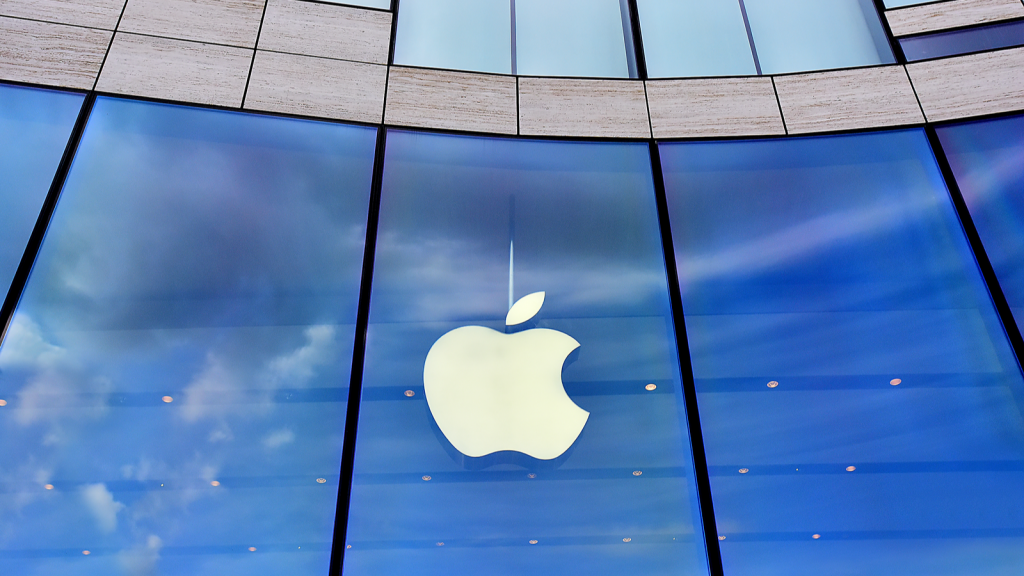- A prominent Wall Street expert is pounding the table on behalf of beaten-down technology stocks.
- AAPL stock appears to be oversold, and a broad-market rally could lift the share price.
- Investors should start accumulating the shares in anticipation of a return to prior highs.
Headquartered in Cupertino, California, Apple (NASDAQ:AAPL) is a technology giant that practically everyone recognizes. Heck, even a tech-challenged investor like Warren Buffett can recognize the value of buying and holding AAPL stock.
Buffett isn’t known for letting fear influence his investments, but not everyone is as rational as he is. Indeed, some folks may be tempted to sell their Apple shares because the Nasdaq recently had a 20% correction.
Market corrections can be scary, but Apple survived them all since the 1970s and came back stronger. Moreover, each and every time, AAPL stock made a full recovery sooner or later.
With a $2.68 trillion market capitalization, Apple is easily big enough to withstand the market’s ups and downs. Besides, one well-regarded expert on Wall Street specifically named Apple as a tech-sector name for investors to target.
What’s Happening With AAPL Stock?
It’s a simple principle that all investors should understand: the feared event isn’t nearly as bad as the buildup of fear that precedes it.
For months, the prospect of the U.S. Federal Reserve raising the effective federal funds rate (which influences U.S. government bond yields generally) was a major source of consternation for tech-market investors.
They feared that high-growth tech names would crash if borrowing and lending costs increased. Consequently, in the lead-up to the Fed’s first interest-rate hike since 2018, the Nasdaq dropped hard and fast.
Just as a rising tide lifts all boats, a sinking ship takes down the entire crew. AAPL stock suffered collateral damage, falling from nearly $183 in January to $150 in mid-March.
A partial recovery followed, but the stock is still down from its prior peak and has room to run. Meanwhile, Apple’s trailing 12-month price-to-earnings (P/E) ratio is quite reasonable, at 27.26.
AAPL stock, and technology stocks in general, rallied after the Fed raised its benchmark interest rate. Again, the fear of the event was worse than the event itself.
A Clear Favorite
After a period of turbulence, Apple’s loyal investors are seeing signs of a possible recovery — and this sentiment has the backing of a prominent analyst on Wall Street.
Wedbush analyst Dan Ives made no bones about his optimism for high-growth technology names, and for one company in particular:
We believe the tech sector is as oversold as we have seen in the last five years and we would strongly be buying cloud, software, cyber security, chips, and stalwart tech names led by FAANG with Apple our clear favorite
Notice that he wrote “our,” indicating that there may be consensus among the Wedbush analyst team that AAPL stock is the best pick of the bunch.
As supply-chain concerns ease, Ives expects that the Apple share price could reach $200 in 2022. On a more general note, Ives anticipates that large-cap technology stocks will likely outperform small-caps.
It’s a bold call during a time when the Federal Reserve seems to have telegraphed six more interest-rate hikes for this year. Just maybe, someone else’s fear could be your best opportunity to buy shares of a legend like Apple at a discount.
What You Can Do Now With AAPL Stock
If you were worried about interest-rate increases wreaking havoc on technology stocks, you certainly weren’t alone.
Now, however, the feared event is coming to pass — and really, it’s not as bad as people thought it would be.
And so, as Ives suggests, there’s a strong potential for recovery in top-tier technology names. Thus, for undaunted tech-market investors, it’s a great time to add some reduced-price shares of AAPL stock.
On the date of publication, David Moadel did not have (either directly or indirectly) any positions in the securities mentioned in this article. The opinions expressed in this article are those of the writer, subject to the InvestorPlace.com Publishing Guidelines.
